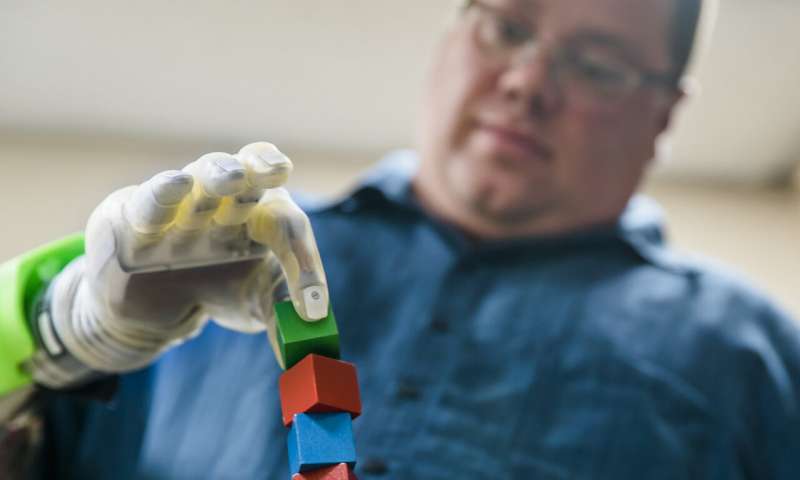
🖖 Technical breakthrough makes a hand prosthesis feel and function like a normal hand
Researchers have taken an existing prosthesis and made it much more accurate and easier to use.
Share this story!
By using AI algorithms and a new technology to strengthen nerve signals, researchers at the University of Michigan have succeeded in creating what is probably the best hand prosthesis ever. The users only need to think about a movement and the prosthesis performs it with very high precision.
"It's like having a hand again. You can do pretty much anything you can with a real hand with this hand. It gives you a sense of normalcy," says Joe Hamilton, who lost his hand in an accident and is now helping to test the prosthesis.
A major problem for this type of solution has been that the nerves in the injured part of the arm are covered by scar tissue which makes it difficult to detect the nerve signals that control the hand. But the researchers have created a method that can make the signals a thousand times stronger.
This means that even weak signals that regulate very small movements can be perceived and passed on to the prosthesis. The signals are also analyzed by AI algorithms before being sent to the prosthesis. The advantage of this is that users do not have to train themselves to use the prosthesis. They just think as usual and then the hand performs what they intended.
The prosthesis itself was not developed by scientists. They partnered with Luke Arm from Moebius Bionics . This has saved a lot of time and money for the researchers. In addition, the prosthesis is already approved by the US FDA, so researchers need only get approval of the algorithm and method to strengthen the nerve signals.
Exactly when the prosthesis can become widely available is not clear, but clinical trials have already begun. So hopefully it won't take very long.